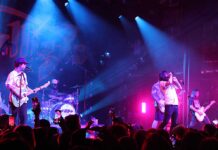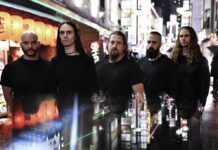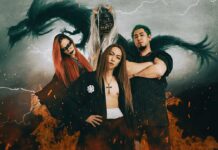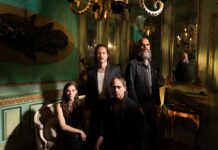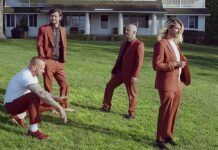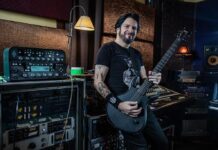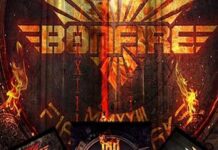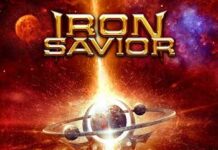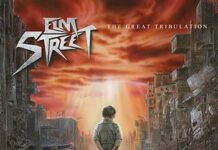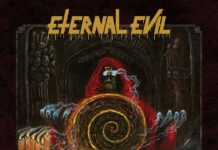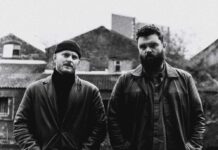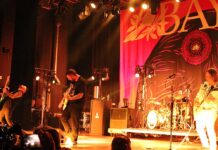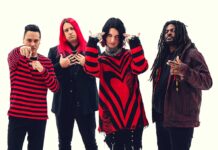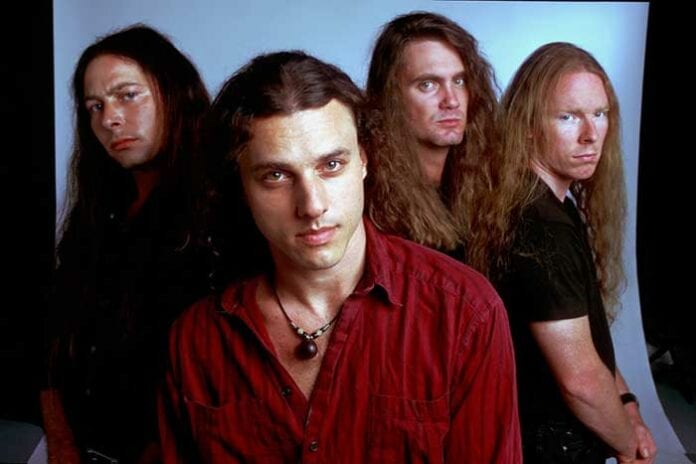
BY STEPHANIE JENSEN
On May 13th of this year, Chuck Schuldiner would have been 52-years-old. Even though his physical presence is no longer with us, his memory lives on with his legendary band Death and the music they created.
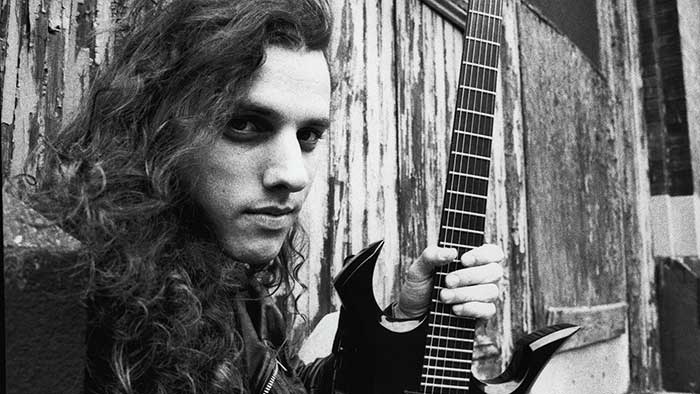
Death’s discography is one of the most complex and unique of any extreme metal bands. Their first three albums—Scream Bloody Gore, Leprosy, and Spiritual Healing—used the harsh and fast stylings of death metal bands during that era. But Death transformed their sound with the band’s fourth album Human, evolving even more with their next releases, Individual Thought Patterns, Symbolic, and The Sound of Perseverance.
From the animosity of Death’s earlier material to the intricate musicianship heard in their later work, Schuldiner needed the right musicians for Death’s evolution. Here, we pay homage to those who played on every Death album and learn what they’re doing now.
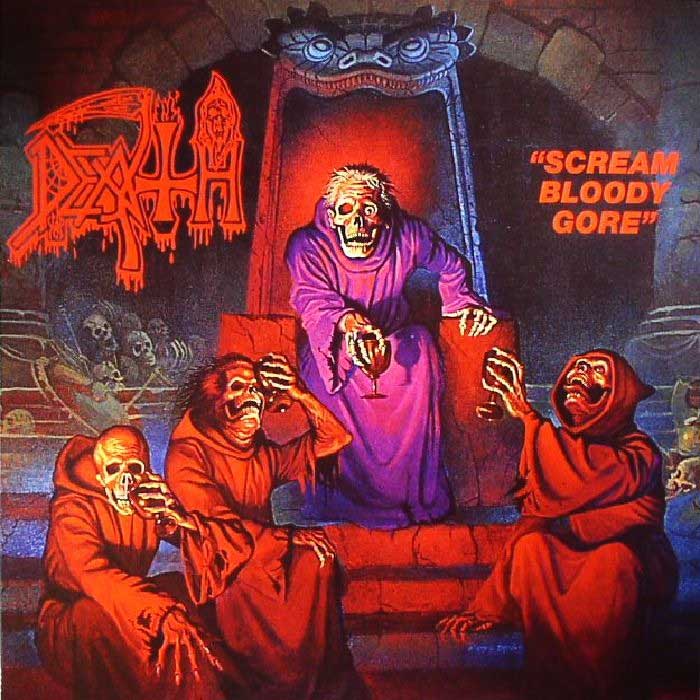
SCREAM BLOODY GORE (1987)
Death’s horror themed debut is nothing short of a masterpiece. It embodies the energy from the growing thrash movement and adds crushing riffs and solos so brutal they put you in a chokehold. Chuck not only played all guitar parts, but he also played bass on the album. However, he couldn’t create this iconic album alone. He had the help from one musician whose name is just as recognizable as Chuck’s.
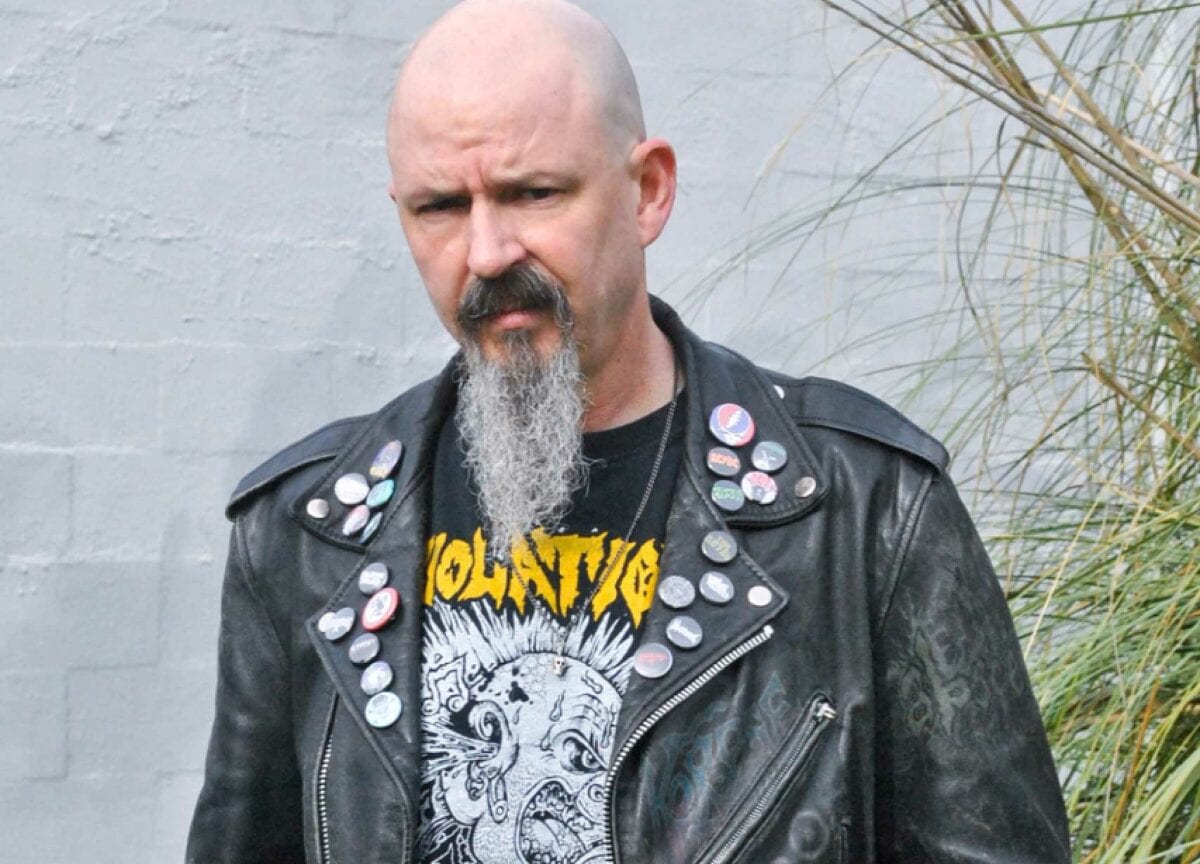
CHRIS REIFERT
When Chris Reifert recorded drums for the album that’s now a staple in death metal history, he was only 17-years-old. The recording perpetually left a mark on him, and after he left Death, he formed Autopsy. Their debut, Severed Survival, embodies the violence and gore of horror. Genius tracks such as “Charred Remains” leave a scar on your flesh, compelling you to come back for more.
The album is also famous for featuring bassist Steve Di Giorgio (who we will mention later). His perfect bass tone cuts like a sharpened blade on each song.
Since their debut, Autopsy has grown to release successful albums such as Mental Funeral and newer albums such as Tourniquets, Hacksaws, and Graves, which have received praise. Reifert also helped formed Abscess, and that band gained success before its disbandment.
Reifert currently plays in Autopsy and also has punk influenced band Violation Wound and psychedelic rock band Painted Doll. He’s also in the supergroup Siege of Power.

LEPROSY (1988)
In the one year after Scream Bloody Gore’s release, Death emerged with Leprosy. Even though this album still holds the gritty sound and brutality of Scream Bloody Gore, the album itself is better composed. The songs have more progression, the solos are more technical, and you can hear the maturity in this second release.
We may never know the real reason behind this quick advancement, but we do know Leprosy featured core players that highly influenced this album.
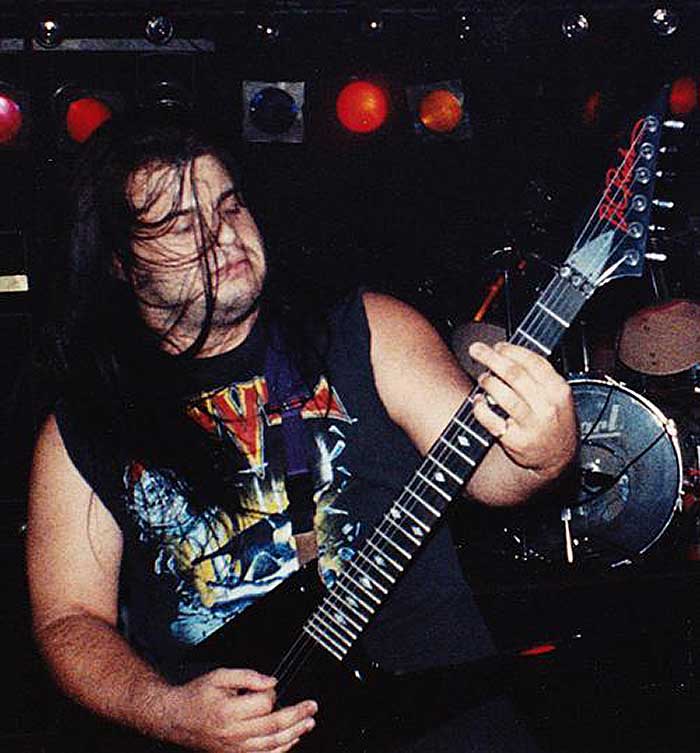
RICK “ROZZ” DELILLO
This isn’t Rick Rozz’ first contribution to Death. He was a member of Chuck’s earlier band, Mantas, and appeared on Death’s early demos and EPs (Reign of Terror and Infernal Death). Once Chuck moved back to Florida after recording Scream Bloody Gore, Rick Rozz was one of the members he brought back for the recording of Leprosy. Rozz also toured with Death during their Leprosy runs in North America and Europe.
During the recording of the earlier Death demos, Rick Rozz helped form Massacre along with guitarist Allen West, drummer Bill Andrews (who we will mention later on), and vocalist Kam Lee. Bassist Terry Butler also later joined.
Massacre is famous for their debut album From Beyond. This crushing release is known for being a major death metal influential album and is one of the albums that put Florida on the map for its legendary death metal scene.
Massacre has had a rugged road with consistent breakups and reunions. However, their 2011 reunion proved they’re in it for good. They released Back from Beyond in 2014, which also earned praise.
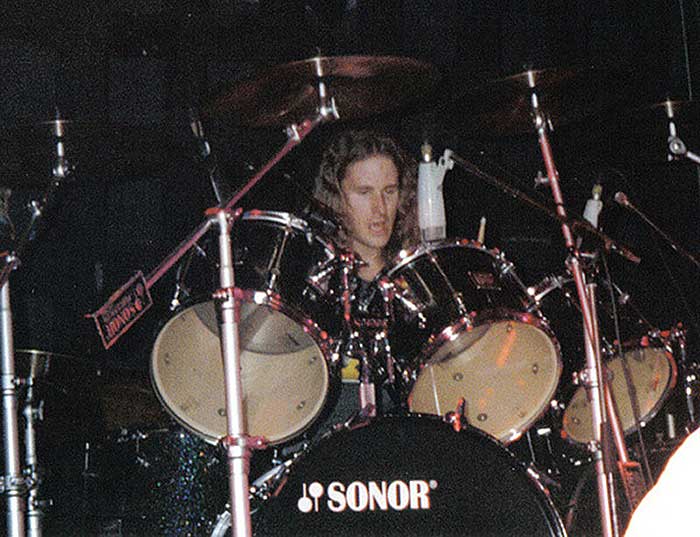
BILL ANDREWS
Bill Andrews is another member who helped form Massacre and appeared on From Beyond. He left Massacre in 1993.
Andrews not only recorded drums for Leprosy, but also for Death’s third album Spiritual Healing. Andrews also toured with Death for Leprosy’s North America, Europe, and Mexico tours and for Death’s Spiritual Healing tour. Controversy began when Chuck cancelled a European tour, but Andrews and bassist Butler upheld the contractual duties and continued the tour with replacement musicians. Chuck fired both musicians and took legal action, since they still used Death’s name.
Since his time in Death, Bill Andrews did some session work for the band Metalucifer.
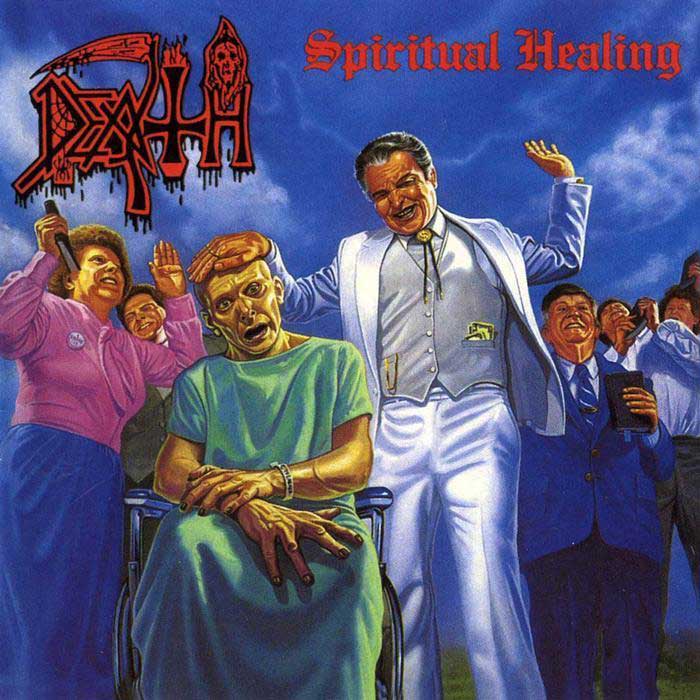
SPIRITUAL HEALING (1990)
Spiritual Healing was the beginning of Death’s turning point. They don’t feature the gore filled lyrics and thrash influenced agility. Instead, you hear impressive guitar work (thanks to Chuck, but also guitarist James Murphy) while still upholding the harsh tone mixed with more melody. This is apparent in songs such as “Living Monstrosity.”
Drummer Bill Andrews is back for this album, but Chuck also recruited Murphy and bassist Terry Butler.
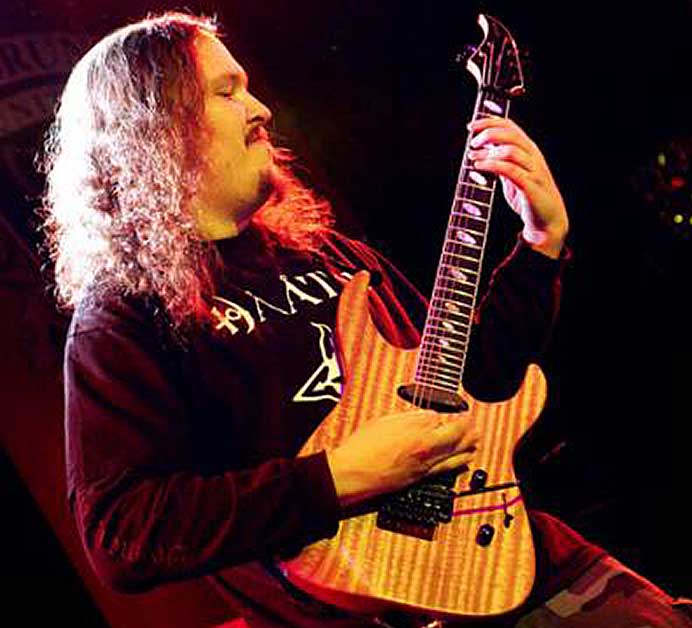
JAMES MURPHY
Spiritual Healing is the crossroads album between advancing Death’s sound and still upholding their previous thrashy death metal influences. Chuck needed a guitar player who was able to play with both influences. James Murphy was that man.
Spiritual Healing saw one of the biggest advancements in guitar work, and James Murphy had a huge influence on this. Murphy played the leads on the album, and every solo is absolutely perfect. Murphy is able to lash out with impressive guitar solos, but his signature style is heavy. However, he left Death soon after the recording.
Spiritual Healing wasn’t the first death metal album Murphy appeared on. Murphy also played guitar on British death metal band Cancer’s second album, Death Shall Rise.
Along with Death, Murphy is most famous for his work with Florida death metal band Obituary and thrash metal band Testament. You can hear his playing on Obituary’s Cause of Death (he really took that album to another level and delivered some of the best solos, such as the one in “Body Bag”) and Testament’s album Low and The Gathering.
In addition, Murphy has contributed a myriad of guest solos. This includes bands like Solstice, The Absence, Broken Hope, Gorguts, Dååth, Malevolent Creation, Gruesome, and Nevermore. He’s also recorded two solo albums.
Today, Murphy operates a recording studio, SafeHouse Production.
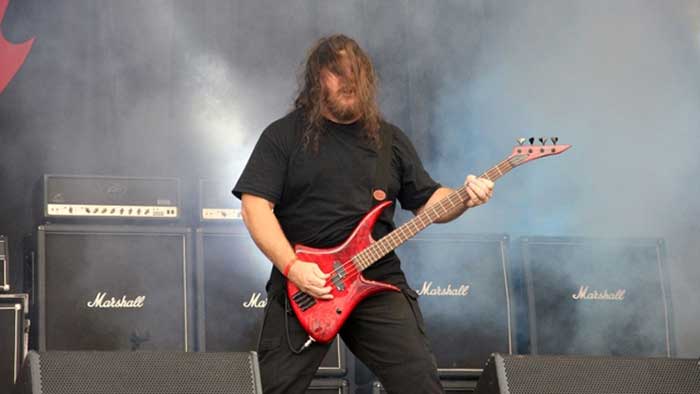
TERRY BUTLER
With Death’s maturity, Chuck needed a more advanced and swift rhythm section. Terry Butler was the biggest addition to the lineup. He’s the epitome of classic death metal bass players and will forever go down in death metal history.
Spiritual Healing is the only Death album to feature bassist Terry Butler, and Butler also did the tours in support of the album. But in no way did Terry’s career end here.
After his time in Death, Terry went on to continue his work with Massacre. He’s featured on From Beyond, the EP Inhuman Condition, and Back from Beyond.
From here, Terry joined Chris Barnes’ band Six Feet Under on bass. He recorded a large part of their discography and toured with them until his departure from the band.
Today, Terry is in the band Obituary. He appeared on their most recent albums (Inked in Blood, Ten Thousand Ways to Die, and Obituary). He’s also in the supergroup Hideous.
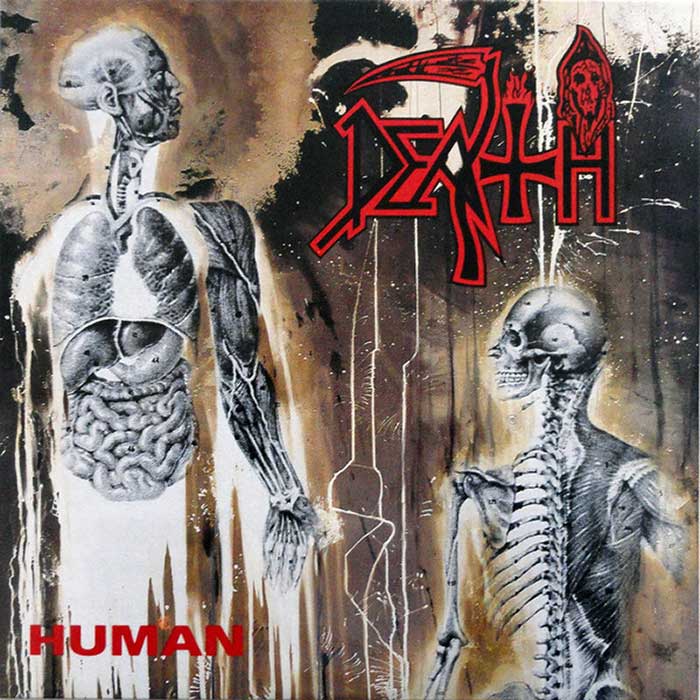
HUMAN (1991)
Human propelled Death forward to unknown territories in the realm of death metal. Death moved away from the graveling death metal sound, embossing their music with progressive songwriting. This is why Human is one of the most iconic releases in Death’s discography.
Human was also a turning point in Death’s lineup. Chuck decided to not hire full-time members and instead recruited session musicians. The lineup featured on Human is one of Death’s most famous—Cynic members Paul Masvidal and Sean Reinert, along with bassist Steve Di Giorgio.
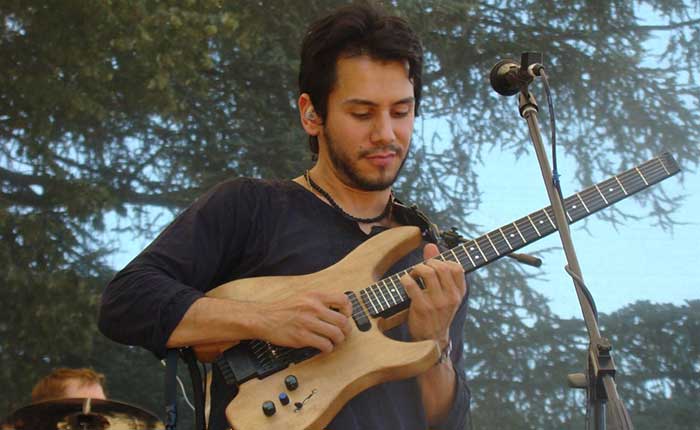
PAUL MASVIDAL
Paul Masvidal is one of the most unique guitarists in death metal and still upholds and individualistic playing style with heavy jazz and fusion influences. This versatility made him the perfect match for the Human album.
After recording the album and touring with Death for awhile, he declined more writing and tour offers to focus on Cynic. In 1993, Cynic released the debut Focus. Cynic was a band that death metal fans at the time couldn’t conceive. Instead of harsh and aggressive, Cynic’s almost dream-like sound embodies Masvidal’s and Sean Reinert’s expert playing with Sean Malone’s serpentine bass. This dynamic trio with their unique sound makes Cynic an impossible band to replicate.
After the release of Focus, Cynic disbanded, and Masvidal worked on side-projects such as Aeon Spoke. Cynic reformed and released the album Traced in Air in 2008 and went on to achieve even more success with the 2011 EP Carbon-Based Anatomy and the 2014 album Kindly Bent to Free Us. Masvidal also made guest appearances for bands such as Persefone.
Drummer Sean Reinert left the band in 2015, and Cynic gained Trioscape’s drummer Matt Lynch. Cynic is still active and so far has released one new song, “Humanoid.” Masvidal is also making grounds as a solo artist and recently released the song “Parasite.” The song will appear on the EP Mythical, due out on May 31.
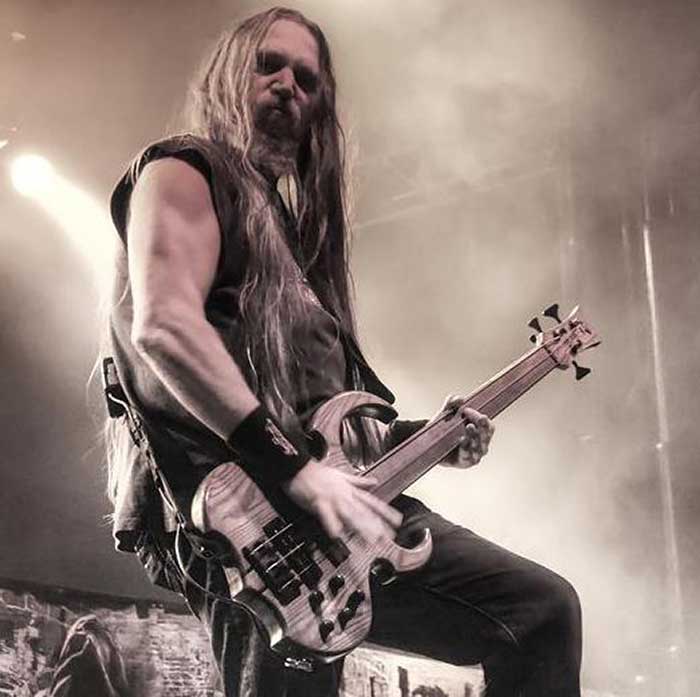
STEVE DI GIORGIO
If we had to name the king of extreme metal bass, that title has to go to Steve Di Giorgio.
What isn’t there to say about Di Giorgio’s bass playing? Can we not elaborate on his skill, his technicality, and how he can even play with a three stringed bass? Can we not elaborate on his absolutely perfect tone?
Di Giorgio is a founding member of the California thrash metal band Sadus and played in Autopsy as a session musician for a brief time. But in 1991, he was crowned the next bassist of Death. His perfect bass lines first appeared on the Human album. Unfortunately, we can barely hear his bass (but the bassy goodness in the next album, Individual Thought Patterns, makes up for it). Di Giorgio also played in Control Denied, Chuck’s other band.
After Death and Control Denied, Di Giorgio is most famous for playing in Testament and Iced Earth. But he has played in a slew of bands, as an official member, a session musician, and as a touring musician. Some of those bands include Sebastian Bach, Obscura, Charred Walls of the Damned, and Obituary. He was also one of the touring members of the Death to All (later changed to DTA) Tour.
Today, he still plays in Testament and is in the supergroup Spirits of Fire. He also balances these bands with session work and other projects.
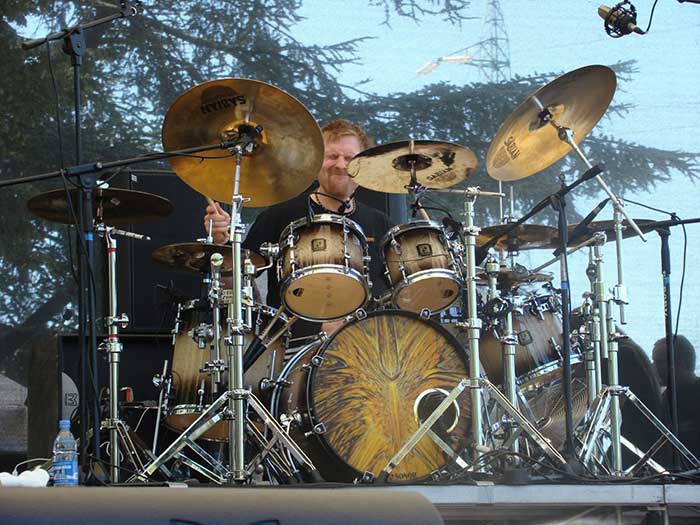
SEAN REINERT
Think of the backbone of modern extreme metal drumming. A few names may come to mind. Well, Sean Reinert better be one of them. Chuck also brought Reinert in for the Human album. From the blastbeats to his insane drum fills, Reinert was doing things on drums that no other extreme metal drummer was doing.
Reinert is also famous for being a founding member of Cynic along with Masvidal, and he and Masvidal were in Aeon Spoke together. Reinert is also known for other bands such as Gordian Knot. Sean departed Cynic in 2015, but didn’t officially announce his exit until 2017, and he then joined the progressive rock band Perfect Beings.

INDIVIDUAL THOUGHT PATTERNS (1993)
With Individual Thought Patterns, Death took a step ahead from Human and made their sound even more progressive and robust. The guitars on this album are relentless with solos and riffs attacking you from all directions. Di Giorgio makes another appearance on this album, whose bass lines mend perfectly with the guitars and drums.
As with all other Death albums, Chuck took another step up and found the perfect guitarist and drummer to ignite the flames on this album.
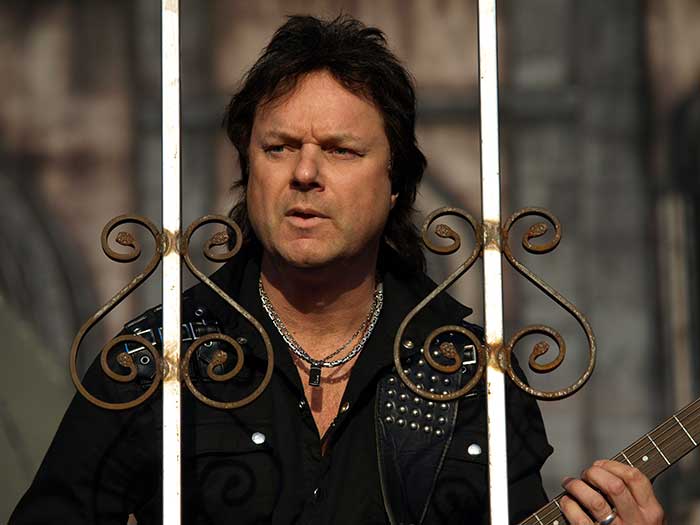
ANDY LAROCQUE
Unlike the previous album Human, the guitars on Individual Thought Patterns fluctuate from crazy riffs to brutal shredding to impossible solos. Chuck needed a truly dynamic player, and there’s no one better to fit the role than Andy LaRocque. His neoclassical style comes out in songs such as “Overactive Imagination” and the “Individual Thought Patterns” title track. But his playing held so much vigor and aggression that fans had never heard before.
Andy LaRocque wasn’t a new guy to the professional music industry when he joined Death. He already gained success as King Diamond’s guitar player, who he still plays with today.
LaRocque also played as a guest guitarist for several notable bands. He played a guitar solo for the At the Gates song “Cold,” and his guitar work is also featured in bands such as Evergrey, Dimmu Borgir, and Shining.
As well as recording and playing with King Diamond, LaRocque owns Sonic Train Studios in Varberg, Sweden, where he has produced bands such as Evergrey, HammerFall, Dragonland, In Flames, Shining, and more.
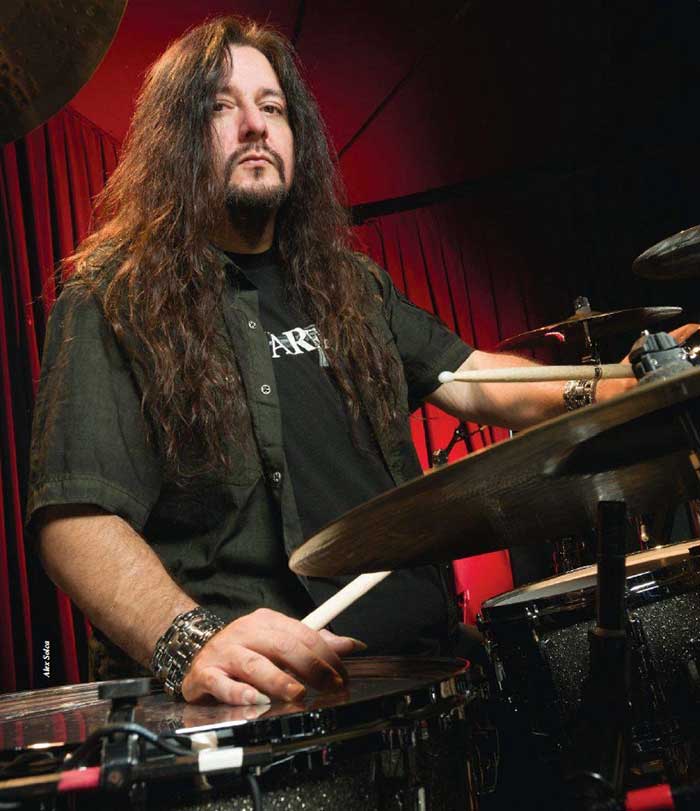
GENE HOGLAN
Gene Hoglan is a truly unique drummer. Known as “The Atomic Clock,” his drumming is creative but striking enough to be a perfect fit for Death’s Individual Thought Patterns album. Hoglan has worked with just about every legendary band in metal. Today, he’s known as one of the most influential metal drummers.
Like LaRocque, Hoglan wasn’t a new guy when he joined Death. He started his career as Slayer’s lighting engineer and played drums during their soundcheck. This led to Hoglan joining thrash band Dark Angel. After several Dark Angel albums, Hoglan joined Death for Individual Thought Patterns. His progressive drumming style fit the band’s direction flawlessly, and he also joined Death for their next album, Symbolic.
After his time in Death, Hoglan’s career flourished. He worked with bands such as Strapping Young Lad and Devin Townsend’s solo material, Testament, Dethklok, and Fear Factory.
Today, Hoglan still plays in Testament and Dark Angel. In 2017, he also released an art gallery, consisting of psychedelic themed photographs of him playing drums.
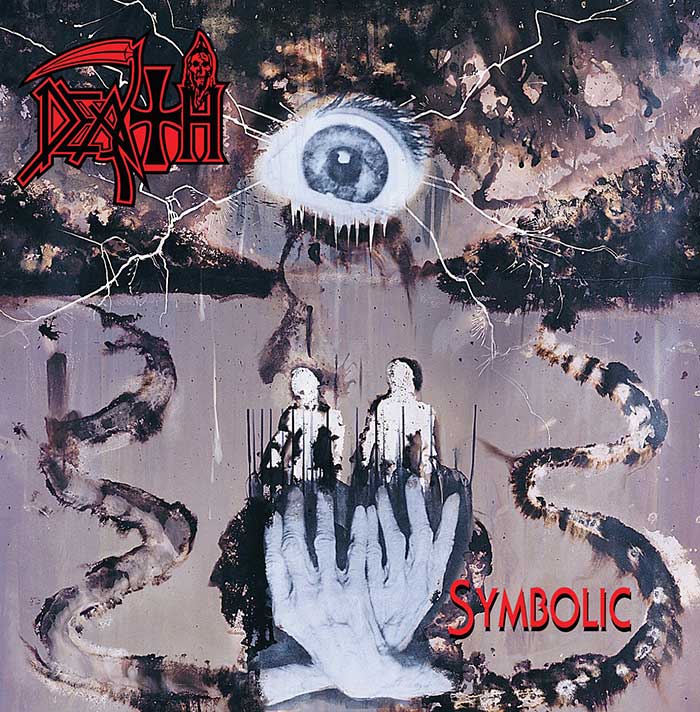
SYMBOLIC (1995)
The previous two Death albums aimed to take Death’s music to a more progressive but equally heavy approach. However, there was something missing in those albums. Chuck and his troupe finally found the missing magic and created Symbolic.
Symbolic blends every influence so smoothly—heavy riffs and technical solos that provoke, all joined in unison with skillful drumming from Hoglan. Symbolic uses the best of dexterous composition, as heard in a song such as “Misanthrope.” However, the album isn’t just a shred and drumming fest. There are plenty of songs that convey all of the “feels,” such as “Empty Words.” This not only makes Symbolic one of Death’s most advanced albums, but yields so much passion.
With Symbolic, Chuck brought two fresh faces into the mix—Bobby Koelble (guitar) and Kelly Conlon (bass).
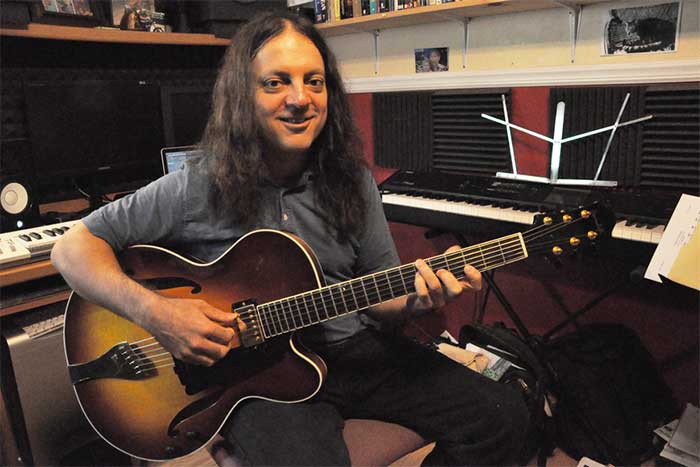
BOBBY KOELBLE
Bobby Koelble’s jazz influenced guitar playing truly gave Symbolic the sentiment it still holds today. His playing is complex but melodious. He plays each note with extreme skill, but you can feel the passion from his fingertips.
Koelble is not only a notorious figure in death metal, but he’s a notable figure in jazz. After his time in Death, he took a break from extreme metal guitar and pursued a career in jazz guitar.
Orlando residents commonly see Koelble on stage, whether he’s playing cover tunes or he’s playing a jazz gig, and he has played with bands such as The Absinthe Trio and The Jazz Professors. Koelble also played guitar for iconic jazz artists such as Dr. Lonnie Smith, Sam Rivers, and Lou Donaldson.
Just because Koelble has had a successful stint in jazz doesn’t mean his heavy metal days are over. Koelble, a longtime metal and rock ‘n’ roll fan, still plays metal to this day. And in 2014, he joined previous Death musicians for the DTA (formerly Death to All) Tour. He has also appeared as a guest guitarist for several bands, including Monotheist and Abysmal Dawn.
Today, Koelble plays in many different bands in the Orlando area and teaches jazz guitar at Rollins College and the University of Central Florida (UCF).
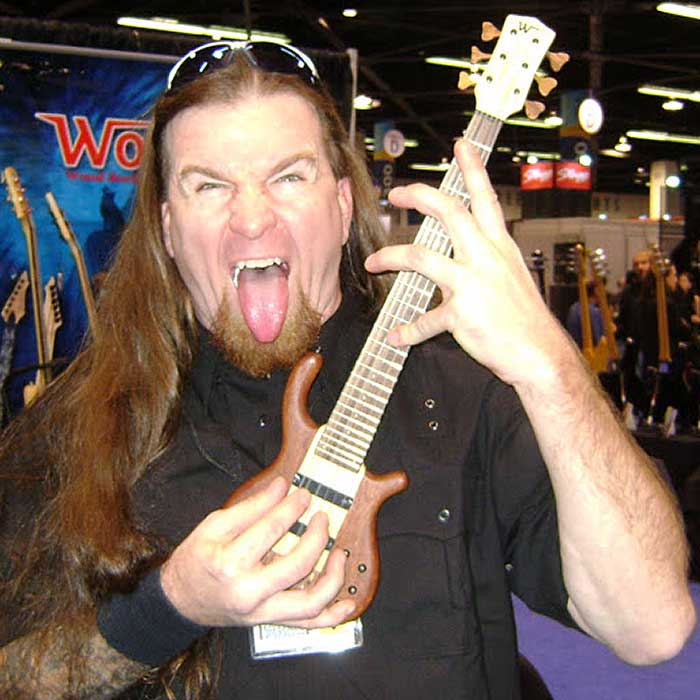
KELLY CONLON
Conlon’s bass perfectly held the speed to keep up with the duo of shredders and with Hoglan. Unfortunately, the bass got lost in these mixes (you hear it a little more in the remastered version, though). But at least we have that incredible opening bass line to “Sacred Serenity.”
After the recording of Symbolic, Conlon played on the Full of Hate Festivals in Europe in support of the album. Not long after, Conlon joined Florida death metal band Monstrosity and played on the albums Millennium and Dark Purity. Conlon also played for other bands such as Sargon and Fires of Babylon.
Today, he’s currently active in the death metal band Pessimist and Shatter Messiah.
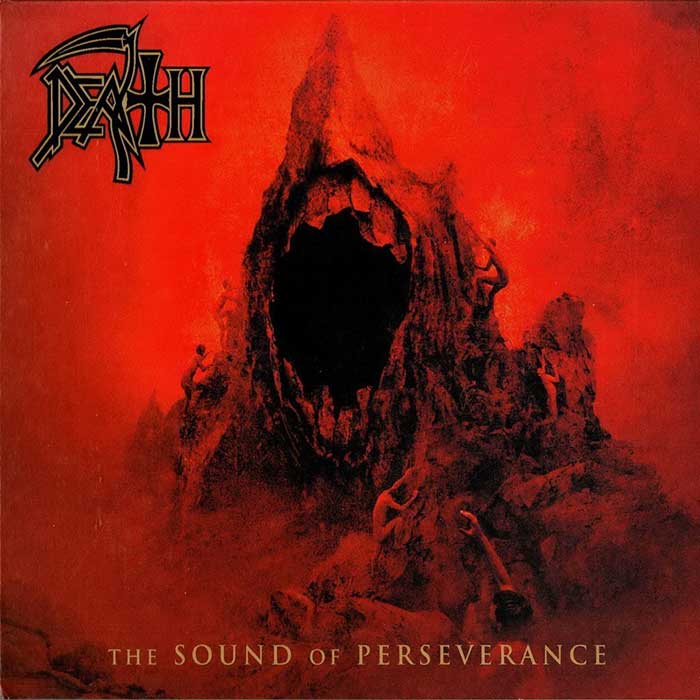
SOUND OF PERSEVERANCE (1998)
Unfortunately, our Death list has (almost) come to an end. Here, we’re at the last Death album before Chuck’s death in 2001.
With Sound of Perseverance, Death still continued on with the melodic overtones we heard on Symbolic, but with the vigorous aggression we’ve always experienced in Death’s discography. But the most unique aspect we hear is Chuck’s vocals—he switched to a high-pitched growl, replacing his coined midrange growls. We also hear some falsetto action in their cover of “Painkiller,” proving Chuck had an amazing range that fans never truly got to hear.
With Sound of Perseverance came three new musicians whose careers were forever influenced by this final Death album.
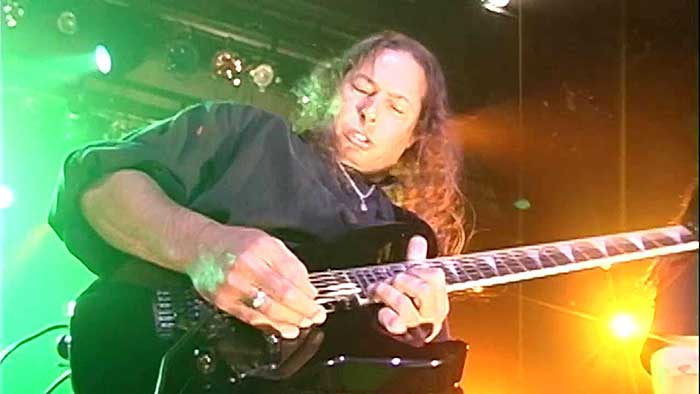
SHANNON HAMM
Shannon Hamm’s guitar playing on the Sound of Perseverance album is of upmost supreme. His work on the track “A Moment of Clarity” is mind-blowing. From every riff to that incredible solo in the middle of the song, each note played prevails until the end of the song.
Hamm was the last guitarist in Death before Chuck’s passing. He also played in Chuck’s other band, Control Denied.
But how did Chuck find this virtuoso player? Hamm was actually a well known guitar player in the Texas metal scene. Hamm was in a band called Metalstorm and he supposedly “out shredded” Dimebag during Pantera’s glam metal days. According to an interview, Hamm said Chuck came across footage of Hamm playing in Metalstorm.
In 2012, Hamm was a guest on the Death to All Tour.

RICHARD CHRISTY
Not sure what’s better—Richard Christy’s drum performance on the Sound of Perseverance album, or his unexpected encounter with Chuck Schuldiner.
Christy moved to Orlando in 1996. A year later, he meets Schuldiner in a bookstore at the Altamonte Springs Mall. He soon discovered Death needed a drummer. He auditioned for the role and was offered the position.
It’s easy to see why Chuck was so impressed with Christy’s drumming. His drum style uses the right amount of force, and his stylistic fills fit in perfectly with Chuck and Hamm’s guitar work.
In addition to performing on the album, Christy toured in Europe with Death in support of Sound of Perseverance. Christy was also the drummer for Control Denied and was a member of Death until Chuck’s death.
But this was only the beginning of Christy’s career. He became a member of Iced Earth and Leash Law. From here, Christy played with other reputable bands, including Demons & Wizards and Incantation. Christy took off a few years of playing music to work for the Howard Stern Show. After his hiatus, Christy formed the supergroup Charred Walls of the Damned with Di Giorgio, Audiohammer’s Jason Suecof, and vocalist Tim “The Ripper” Owens.
In addition to his music career and his work with the Howard Stern Show, Christy is also a filmmaker and even did voiceovers for the cartoon shows Metalocalypse and Rick and Morty.
Today, you can still experience Christy’s crazy antics on the Howard Stern Show. Christy is still making music. However, he’s not making music with humans. His band members are three guinea pigs, and they formed the band Boar Glue.
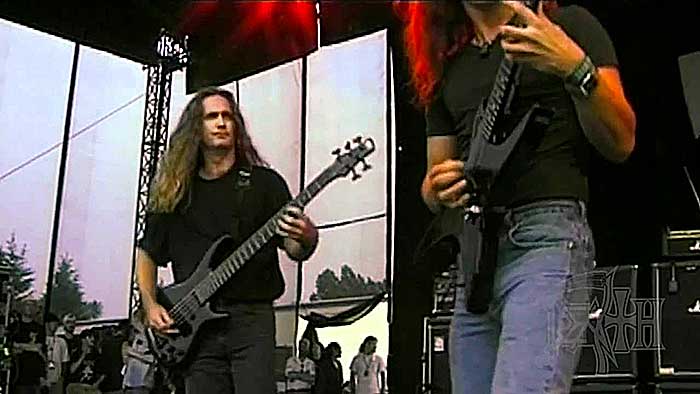
SCOTT CLENDENIN
Any Death fan can recognize the beginning bass line to the song “Spirit Crusher.” Like many of Death’s albums, the bass is lost in the mixes of most songs. But this doesn’t affect Clendenin’s contributions to the album. Clendenin did the tours in support of Sound of Perseverance and contributed to Control Denied.
After his time in Death and Control Denied, he participated in the Death to All Tour during the years 2012 and 2013. Unfortunately, Clendenin passed away on March 24, 2015 at 47 years old.

